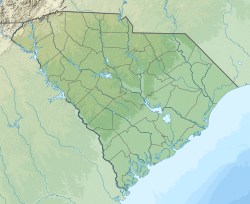| Temple Sinai | |
|---|---|
 Temple Sinai in 2014 | |
| Religion | |
| Affiliation | Reform Judaism |
| Ecclesiastical or organizational status | Synagogue |
| Leadership | Lay led |
| Status | Active |
| Location | |
| Location | 11-13 Church Street, Sumter, South Carolina 29150 |
| Country | United States |
Location in South Carolina | |
| Geographic coordinates | 33°55′17.7″N80°20′48.4″W / 33.921583°N 80.346778°W |
| Architecture | |
| Type | Synagogue |
| Style | Moorish Revival |
| Date established | 1895 (as a congregation) |
| Completed | 1912 |
| Materials | Brick |
| Website | |
| templesinaisumter | |
Temple Sinai | |
| Area | less than one acre |
| NRHP reference No. | 98001645 [1] |
| Added to NRHP | January 21, 1999 |
Temple Sinai also known as Congregation Sinai, whose official name is the Sumter Society of Israelites, is an historic Reform Jewish congregation and synagogue, located at 11-13 Church Street, on the corner of West Hampton Avenue, in Sumter, South Carolina, in the United States. [2] [3]
Contents
The brick temple was built in 1912 in the Moorish Revival style and was added to the National Register of Historic Places on January 21, 1999. It also houses the Temple Sinai Jewish History Center that opened in June 2018. [2]


